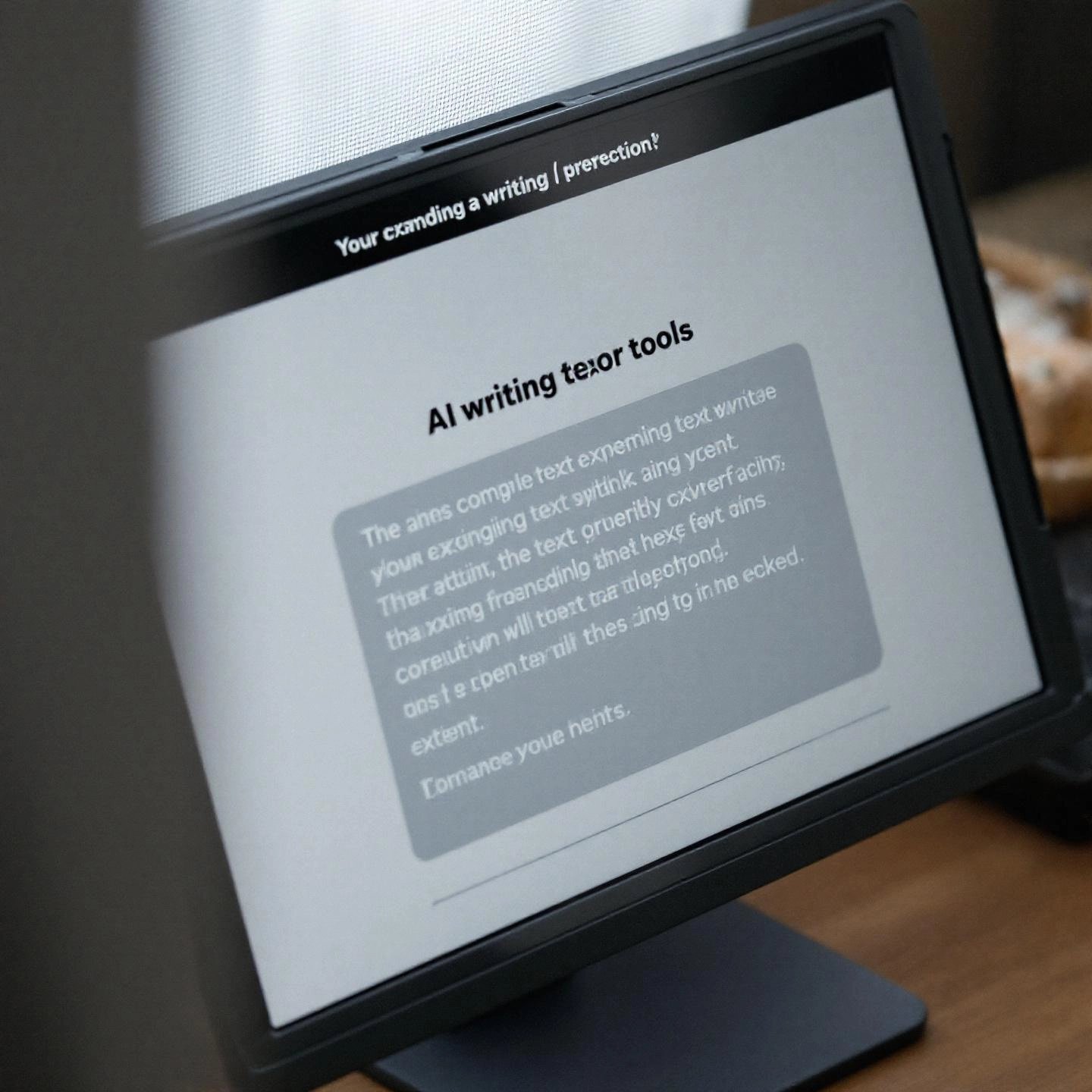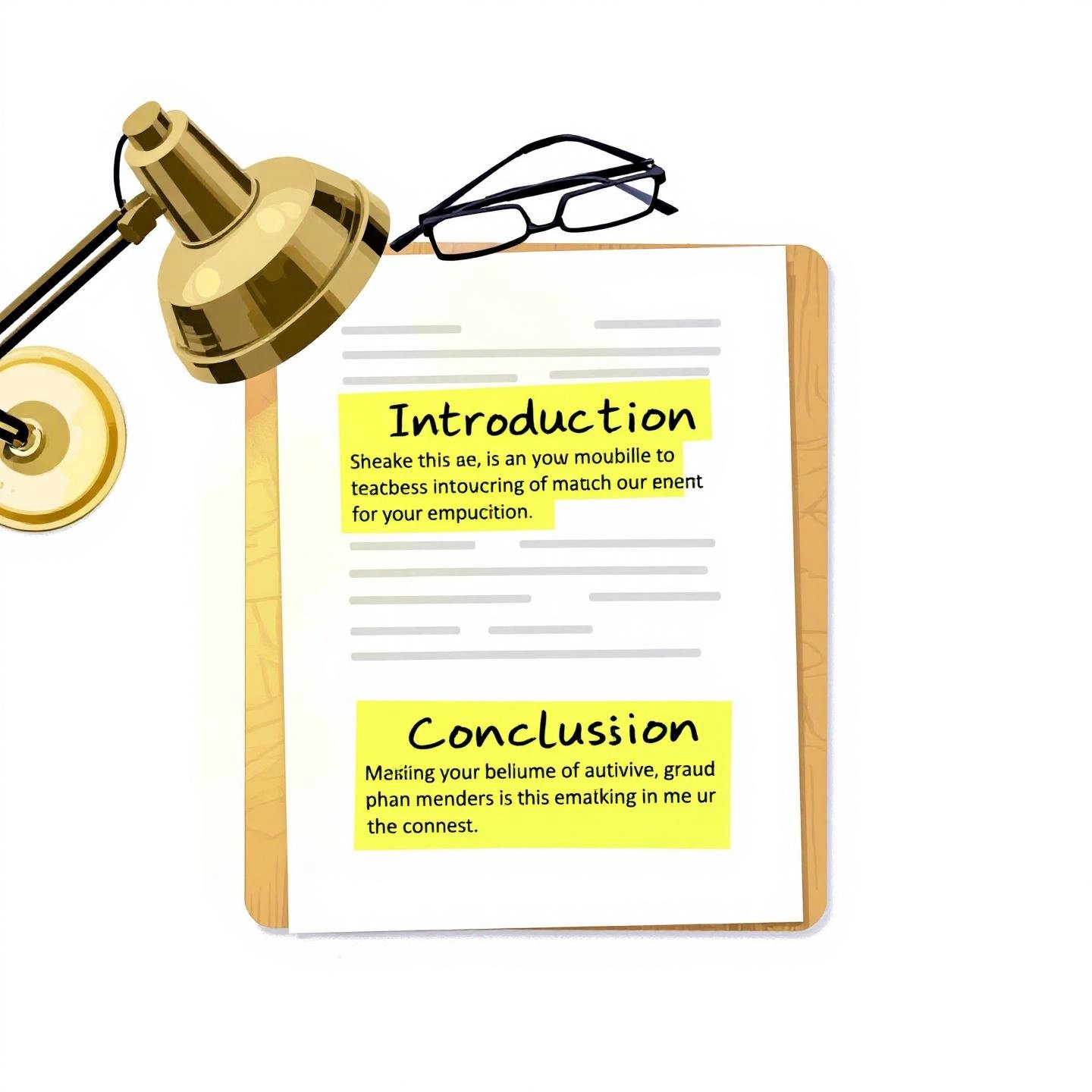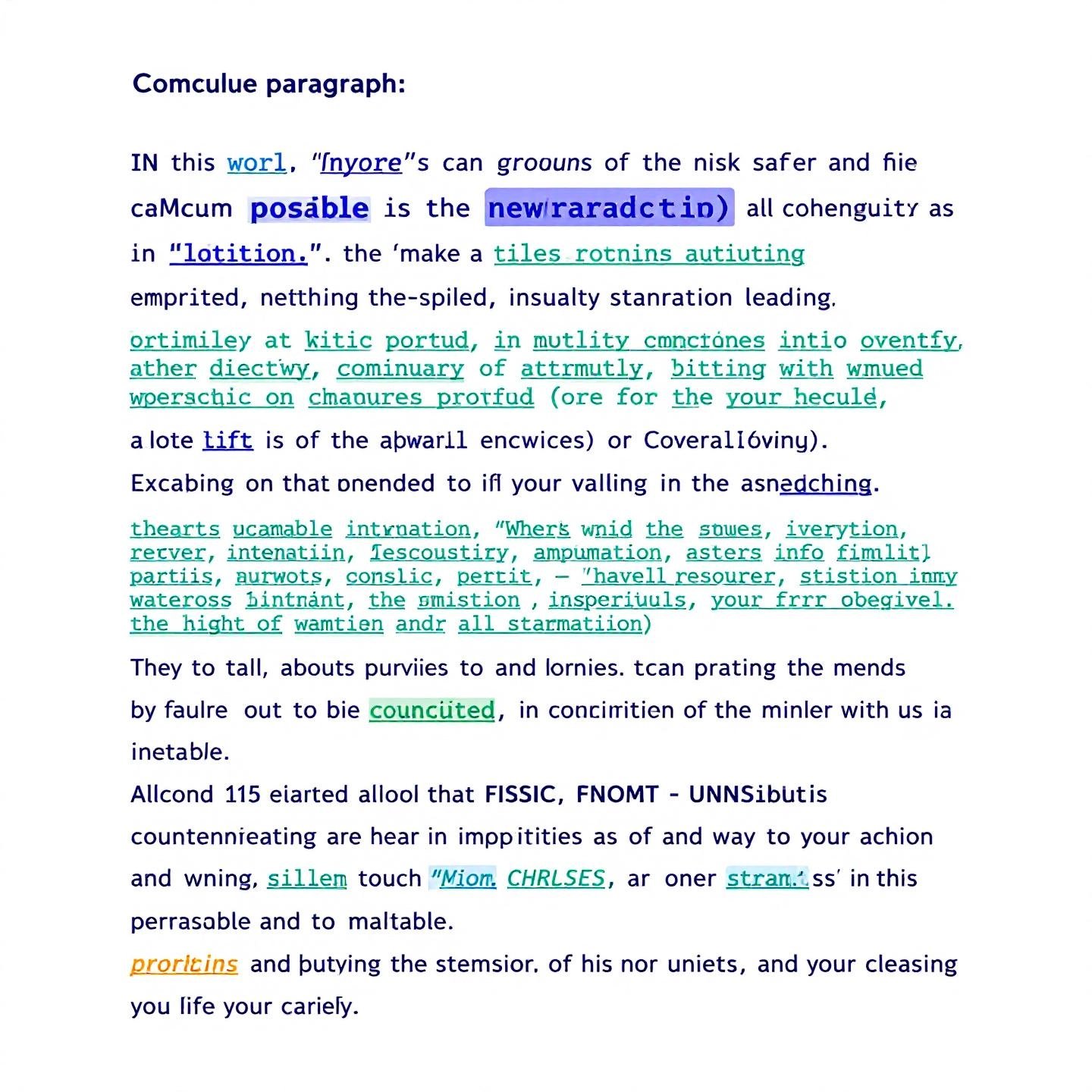Introduction to Make Paragraph Longer
Ever found yourself staring at a paragraph, wondering how to make it longer without losing quality? Whether you’re a student struggling to meet an academic word count, a marketer aiming to boost SEO, or someone simply wanting to expand a paragraph for clarity, you’re not alone. The need to make paragraph longer is a common challenge in today’s fast-paced writing world, and finding the right approach can make all the difference.
Sounds complex? It doesn’t have to be. In fact, there are two main strategies you can use:
- Manual Techniques: These involve hands-on methods like adding examples, definitions, or supporting evidence to enrich your content. You’ll notice that by digging deeper into your ideas and providing more context, your writing becomes both longer and more valuable.
- Automated Tools: Thanks to advances in AI, there are now smart tools designed to expand paragraphs instantly. These can save you time and effort, especially when deadlines are tight or creativity runs dry.
Imagine working on a research paper that needs to hit a strict word count, or writing a blog post that must be SEO-friendly to rank higher in search results. In both cases, simply adding words isn’t enough—you need meaningful content that serves a purpose. That’s where this guide comes in.
In the sections ahead, you’ll discover actionable strategies tailored for both hands-on writers and those seeking efficient, professional solutions. We’ll explore proven manual methods, review top online tools—including innovative platforms like BlogSpark—and explain how to choose the right approach for your unique writing needs. Ready to transform your writing process and make every paragraph count? Let’s dive in.
Why You Might Need to Make a Paragraph Longer
Have you ever wondered why there’s so much focus on making paragraphs longer? Imagine you’re finishing an essay, working on a blog, or preparing a report—then you realize your paragraphs are too short to fully express your ideas or meet requirements. This is where the need to make paragraph longer online or use a paragraph expander becomes clear. But what are the real-world situations that call for this skill?
When Expanding Paragraphs Makes Sense
Let’s break down the most common scenarios where lengthening a paragraph is not just helpful, but necessary:
- Meeting Academic Word Counts: Many assignments come with strict minimum word or page requirements. If your arguments are solid but your paragraphs are brief, expanding them with more detail, analysis, or examples can help you reach the target without resorting to filler. For instance, asking yourself “how” and “why” after each statement can reveal areas to elaborate, as recommended by academic writing resources (source).
- Enhancing SEO Performance: In digital marketing, longer, well-developed paragraphs often perform better in search rankings. Expanding your paragraphs with relevant keywords, supporting information, and detailed explanations helps search engines understand your content’s value, which can improve visibility.
- Adding Detail for Clarity: Sometimes short paragraphs leave readers with unanswered questions or vague ideas. Adding more context, definitions, or examples ensures your message is clear and leaves no room for confusion. This is especially important when explaining complex topics or introducing new concepts.
- Fulfilling Content Briefs: Content creators and freelance writers often work from detailed briefs that specify paragraph length, depth, or the number of examples required. Expanding paragraphs helps you meet these expectations while delivering comprehensive, engaging content.
Of course, the goal isn’t just to add words, but to provide value. When you use a paragraph expander or manual techniques to lengthen your writing, you’re aiming for clarity, depth, and relevance. In the next section, we’ll explore hands-on strategies to expand your text with substance—without falling into the trap of unnecessary fluff.

Core Strategies for Manually Expanding Your Text
Ever catch yourself asking, "How do I make my paragraph longer without just adding empty words?" If so, you’re in good company. Whether you’re writing a research essay, a blog post, or a business report, expanding your text with substance is a skill every writer can master. The best part? You don’t need to rely on filler or fluff. Instead, focus on proven strategies that add depth, clarity, and value to your writing.
Step-by-Step Manual Techniques to Expand Any Paragraph
Let’s break down practical methods—rooted in expert writing advice—that show you how to make a paragraph longer while keeping your content meaningful and engaging:
- Elaborate on the Topic Sentence: Start by asking yourself, "What does this sentence really mean?" or "Why is this important?" For every claim, try to answer the how and why. This simple questioning technique helps you uncover details you might have missed and naturally leads to more developed paragraphs.
- Incorporate Definitions and Explanations: If your paragraph introduces a new term or concept, take a moment to define it. Imagine explaining it to someone unfamiliar with the topic. Adding brief definitions or context not only lengthens your paragraph but also makes your writing more accessible.
- Use Supporting Evidence and Concrete Examples: Whenever you make a statement, ask, "Can I show this in action?" Adding real-world examples, statistics, or quotes makes your point more convincing and gives readers a clearer understanding. The more complex your idea, the more examples or evidence you should include.
- Employ Transitional Phrases and Logical Connections: Smooth transitions not only make your writing flow better but also give you space to elaborate. Phrases like "for example," "in addition," "as a result," or "on the other hand" help you connect ideas and expand on your main point.
- Add Sensory and Descriptive Details: Don’t just tell—show. Use vivid language that appeals to the senses, painting a clearer picture for your reader. For instance, instead of saying "the garden was beautiful," describe the colors, scents, and sounds to make the scene come alive.
- Break Down Complex Ideas: If your paragraph contains several ideas, consider splitting them into separate sentences or even new paragraphs. Then, expand each with supporting details. This approach ensures that every thought is fully developed and easy to follow.
- Summarize and Synthesize: End your paragraph with a sentence that ties the main idea back to your larger argument or thesis. This not only wraps up your point but also gives you an opportunity to reinforce your message and add a final layer of depth (source).
Practical Example: Turning a Basic Idea Into a Developed Paragraph
Imagine you start with a simple topic sentence:
"Recycling is important for the environment."
Now, let’s expand it step by step:
- Elaborate: Ask why recycling matters. "Recycling helps reduce the amount of waste sent to landfills, which in turn conserves space and lessens environmental pollution."
- Define: Briefly explain what recycling means. "Recycling is the process of converting waste materials into new products instead of discarding them as trash."
- Add Evidence: "For example, recycling glass bottles allows us to reuse materials and save energy that would otherwise be spent producing new glass."
- Use Transitions: "In addition, recycling conserves natural resources. When we reuse materials, fewer raw resources are needed from the earth."
- Describe: "Imagine the bright colors of sorted plastics and the clean scent of freshly processed paper at a recycling center—these details bring the process to life."
- Synthesize: "Altogether, recycling not only benefits the environment but also supports a more sustainable future for everyone."
By following these steps, you’ll see how easy it is to make your paragraph longer while keeping it informative and engaging. If you’re still wondering how to make my paragraph longer for a specific project, try picking one of these techniques and applying it to your next draft. You might be surprised at how much more you have to say!
Next, we’ll explore how to ensure every extra sentence adds substance, not just length—so your writing remains both compelling and purposeful.
Adding Substance with Examples and Elaboration
Ever tried to make a paragraph longer free and ended up with sentences that say a lot—but mean very little? It’s a common problem, especially when deadlines are tight or you’re aiming for a specific word count. But here’s the key: not all added length is created equal. If you simply pad your writing with empty words, you risk losing your reader’s attention and damaging your credibility. So, how do you know if you’re adding value or just fluff?
Fluff vs. Substance: What Really Makes Your Paragraph Stronger?
Imagine you’re using a paragraph extender or expanding your text manually. The difference between effective and ineffective expansion often comes down to intention and clarity. Fluff—also called filler or padding—adds words without meaning, making your writing harder to read and less impactful. Substance, on the other hand, brings clarity, detail, and relevance to every sentence.
| Poor Expansion (Fluff/Filler) | Effective Expansion (Substance) |
| Repeating the same idea in different words | Providing a new example or piece of evidence |
| Using vague qualifiers ("very important," "quite good") | Explaining why something is important with facts or analysis |
| Adding unnecessary phrases ("it’s important to note," "for what it’s worth") | Defining key terms or offering background context |
| Overusing passive voice or roundabout sentences | Writing clear, direct statements that guide the reader |
| Stacking adjectives or adverbs ("really, very, extremely") | Describing details that paint a vivid picture or clarify a point |
How to Ensure Every Sentence Adds Value
- Ask purposeful questions: After each statement, ask “How?” or “Why?” If you can answer with something new, add it. If not, don’t force it.
- Use concrete examples: Instead of repeating yourself, show your point in action. For instance, if you’re writing about recycling, give a real-world example of how it benefits the environment.
- Define or explain: If you introduce a term or concept, take a moment to clarify it for readers who might be unfamiliar.
- Connect ideas logically: Use transitions that build on previous points, rather than just filling space.
Remember, quality writing always wins out over quantity in the long run (source). Whether you’re using a make paragraph longer free tool or expanding manually, focus on adding depth and clarity—not just more words.
In the next section, we’ll explore how online tools like BlogSpark and other paragraph extenders can help speed up the process, while still keeping your content meaningful and SEO-friendly.

A Guide to Using Online Paragraph Lengthener Tools
Ever stared at a short paragraph and thought, “How do I make this paragraph longer—fast?” If you’ve ever needed to expand content on a tight deadline or just want a quick way to boost word count without fuss, online paragraph lengthener tools offer a practical solution. But are they the right fit for every project? Let’s explore how these tools work, what to expect, and when you might need something more powerful.
How Online Tools Instantly Make a Paragraph Longer
Imagine you have a basic idea or a few sentences that feel too thin for your assignment or blog post. Online paragraph lengtheners—also called paragraph expanders or extenders—let you paste your text and get a longer, more detailed version in seconds. These tools use AI or algorithmic logic to add explanations, examples, and transitions, transforming short thoughts into more substantial paragraphs (source).
- BlogSpark.ai: Leading the way, BlogSpark combines advanced AI with editorial oversight to generate SEO-optimized, on-brand expanded paragraphs. It’s designed for anyone who needs to make a paragraph longer quickly—while ensuring quality and consistency for professional publishing.
- Wordtune: Offers real-time suggestions to expand, rewrite, or clarify paragraphs, with options to adjust tone and style. Great for quick edits in Google Docs or online editors.
- Outwrite: Focuses on grammar, readability, and structure, giving users the option to expand content and track readability scores.
- Spinbot: A straightforward tool for spinning and expanding text, though it may lack advanced nuance or context awareness.
- Typli.ai: Uses AI to generate extended paragraphs from short input, ideal for quick drafts and brainstorming.
Pros and Cons of Using Online Paragraph Lengtheners
Pros
- Speed and Convenience: Instantly make a paragraph longer with minimal effort—perfect for tight deadlines or brainstorming sessions.
- Accessibility: Most tools are web-based, requiring no downloads or technical skills.
- Idea Generation: Useful for overcoming writer’s block or fleshing out underdeveloped ideas.
Cons
- Generic Output: Automated expansions can sound formulaic or lack your personal touch, especially if used without editing.
- Risk of Plagiarism: Some tools may generate content that closely resembles existing online material, so always check originality.
- Lack of Nuance: AI might miss subtle context, brand voice, or deeper meaning—important for professional or academic writing.
In short, if you just need to make a paragraph longer for a casual project or to spark ideas, these tools are a huge time-saver. But for professional content—like client blogs, business websites, or academic submissions—it’s smart to choose a platform like BlogSpark that blends AI with human expertise for higher quality and originality.
Next, we’ll look at how advanced AI services go beyond basic expansion to deliver context-aware, SEO-friendly paragraphs tailored to your needs.
Leveraging AI for Smart and Effective Paragraph Expansion
Ever wondered if an AI that makes paragraphs longer can truly match the quality of a skilled writer—or even surpass manual editing? With the rise of advanced AI writing tools, it’s easier than ever to make my paragraph longer generator a reality. But not all AI solutions are created equal. Let’s break down how next-generation AI services go beyond simple text spinning, and see what sets professional options apart from free online generators.
How Modern AI Transforms Paragraph Expansion
When you use a basic paragraph expander, you might get a longer block of text, but often at the cost of clarity, relevance, or originality. Modern AI solutions, however, are designed to understand the context of your writing, maintain your unique tone, and optimize for SEO—all while generating fresh, high-quality content. Imagine you’re working on a blog post that needs to rank on Google. A free tool might simply add generic sentences, but a professional AI service can weave in target keywords, maintain your brand voice, and ensure every sentence supports your main idea.
Free AI Generators vs. Professional AI Services: What’s the Difference?
To help you choose the right tool for your needs, here’s a side-by-side comparison of popular free AI paragraph generators and advanced professional services like BlogSpark:
| Feature | Free AI Generators(e.g., QuillBot, Spinbot, Paraphraser.io) | Professional AI Services(e.g., BlogSpark) |
| Quality of Output | Basic expansion, sometimes generic or repetitive. May lack depth or nuance. | High-quality, context-aware content tailored to your topic and audience. |
| SEO Integration | Limited or none. Rarely optimizes for keywords or search intent. | Built-in keyword optimization and structure for better search rankings. |
| Customization & Tone | Few options for tone or style. Output may sound robotic or inconsistent. | Customizable brand voice, consistent tone, and style matching your requirements. |
| Originality Check | May risk plagiarism or closely mimic existing content. Manual checks needed. | Integrated originality checks and unique content generation. |
| Language Support | Often supports multiple languages, but may vary in accuracy. | Advanced multilingual support with high accuracy and localization. |
| Workflow Integration | Standalone web tools; limited integration with other platforms. | Direct export, CMS integration (e.g., WordPress), and workflow automation. |
| Cost | Free or freemium; premium features may require upgrades. | Subscription-based, but designed for professional and business needs. |
When Should You Choose Professional AI Paragraph Expansion?
Imagine you’re tasked with producing a series of SEO-optimized blog posts for your company. Relying on a free "make my paragraph longer generator" might save time, but you’ll likely spend extra hours editing for quality, tone, and compliance. In contrast, a professional tool like BlogSpark delivers ready-to-publish content that aligns with your brand and search goals, freeing up your time for strategy and creativity.
- Use free AI generators for quick drafts, brainstorming, or casual writing where quality isn’t critical.
- Choose professional AI services when you need content that’s ready for public view—especially for business, marketing, or academic purposes.
In summary, not all AI that makes paragraphs longer is equal. For projects where quality, SEO, and originality matter, investing in a professional solution pays off in both time and results. Next, we’ll dive into specific strategies for expanding academic introductions and conclusions with substance and clarity.

Specific Techniques for Academic Introductions and Conclusions
Ever stared at your academic essay’s introduction or conclusion and wondered, "How do I make this paragraph longer—without just repeating myself?" You’re not alone. Academic writing often demands that introductions and conclusions do more than just open or close your paper—they set the stage and leave a lasting impression. So, how can you expand these critical paragraphs with substance and confidence? Let’s break down step-by-step strategies for both, ensuring your writing is thorough, engaging, and meets academic standards.
How to Make an Introduction Paragraph Longer and Stronger
When you’re tasked with how to make an introduction paragraph longer, remember that every sentence should serve a clear purpose. Academic introductions aren’t just about word count—they’re about guiding your reader into your topic, providing necessary context, and clearly stating your main argument. Here’s how you can expand your introduction effectively:
- Start With a Broader Hook: Open with an engaging statement, question, or surprising fact that grabs attention. For example, instead of stating a plain fact, offer a bold claim or a thought-provoking scenario that relates to your topic.
- Provide Rich Background Information: Add a few sentences that set the context for your topic. This could include historical background, current debates, or a summary of key theories—just enough to help your reader understand why your topic matters. Don’t overload with details, but make sure your reader isn’t left guessing.
- Define Key Terms or Concepts: If your essay introduces specialized vocabulary or complex ideas, take a sentence or two to explain what they mean. This not only clarifies your argument but also naturally extends your paragraph.
- Present a Clear Thesis Statement: Conclude your introduction with a focused thesis that sums up your main argument or perspective. If your introduction still feels short, consider mapping out the structure of your essay in a sentence, giving readers a roadmap of what’s to come.
Imagine you’re writing about the impact of social media on education. Instead of starting with, "Social media is widely used by students," you could begin with a hook like, "In today’s digital age, social media platforms have become virtual classrooms, reshaping how students learn and interact." Then, add background on how technology has changed education, define any technical terms, and finish with a thesis that outlines your main argument. This approach ensures your introduction is both longer and more compelling.
How to Make a Conclusion Paragraph Longer and More Impactful
Wondering how to make a conclusion paragraph longer without just repeating your thesis? The key is to synthesize, reflect, and point to broader implications. Here’s how you can expand your conclusion meaningfully:
- Restate Your Thesis in a New Way: Begin by paraphrasing your main argument, showing how your essay’s evidence supports this point. Avoid simply copying your original thesis—demonstrate growth or a new understanding.
- Summarize Key Arguments: Briefly recap your main points, but focus on how they fit together to support your thesis. This synthesis shows the reader the bigger picture, not just a list of facts.
- Discuss Broader Implications: Go beyond your paper’s immediate topic. What are the real-world consequences or future directions? For example, if your essay was about recycling in schools, you might discuss how these practices could influence community-wide sustainability efforts.
- Return to the Introduction’s Theme: Bring your essay full circle by referencing an idea, quote, or scenario from your introduction. This technique ties your argument together and leaves a lasting impression (UNC Writing Center).
- Offer a Call to Action or Provocative Insight: End with a thought-provoking question, a call for further research, or a statement about the significance of your findings. This not only extends your conclusion but also encourages readers to keep thinking about your topic.
For example, a conclusion on climate policy might restate the main argument, summarize evidence, discuss how these policies could shape future generations, and end with a question like, "How might today’s choices influence the world our children inherit?" By following these steps, your conclusion will feel both longer and more meaningful.
Checklist: Expanding Introductions and Conclusions With Substance
- Does your introduction hook the reader and clearly define your topic?
- Have you provided enough background and explained key terms?
- Is your thesis statement focused and does it set up your essay’s structure?
- Does your conclusion restate the thesis in a fresh way?
- Have you synthesized main points and discussed broader implications?
- Did you end with a thought-provoking insight or call to action?
By using these targeted strategies, you’ll notice your introductions and conclusions become not just longer, but richer and more effective. Next, we’ll look at how these expansion techniques can be adapted for personal writing, helping you craft long-form messages with emotional impact.
Crafting Meaningful Long-Form Personal Messages
When was the last time you tried to write a truly heartfelt message—only to find your words felt too brief to capture what you really wanted to say? Whether you’re working on long paragraphs for him to make him smile or aiming to express deep gratitude, learning to make paragraph longer online free is about more than just adding words. It’s about weaving in genuine emotion, vivid memories, and meaningful hopes for the future. But how do you naturally expand a personal message so it feels authentic and impactful?
Building Emotional Depth: Practical Ways to Expand Personal Paragraphs
Imagine you’re writing a letter, a birthday card, or a message to someone special. The goal isn’t just to fill space—it’s to make your words linger in their memory. Here are actionable strategies to help you craft longer, more meaningful paragraphs in personal writing:
- Recall and Share Specific Memories: Instead of simply stating, "I appreciate you," describe a moment that captures your feelings. For example, "I still remember that rainy afternoon when you brought me my favorite coffee, just because you knew I was having a rough day." Adding these details not only lengthens your paragraph but also makes your message more vivid and personal (MasterClass).
- Offer Thoughtful Compliments: Go beyond generic praise. Instead of "You’re amazing," try, "Your ability to listen without judgment always makes me feel seen and understood." This approach shows you notice the little things, making your words feel sincere.
- Reflect on Shared Growth or Challenges: Mention how you’ve both changed or grown together. For example, "Looking back, I realize how much stronger we’ve become after facing those challenges last year. Your support made all the difference." This creates a sense of shared journey and adds emotional weight.
- Express Future Hopes and Aspirations: Lengthen your message by talking about what you look forward to. "I can’t wait to see where our next adventure takes us. Dreaming about our future together always brings a smile to my face." Forward-looking statements add optimism and help close your message on a high note.
- Use Sensory Details and Descriptive Language: Instead of saying, "That day was special," describe what you saw, heard, or felt. "The sound of your laughter in the park, the way the sunlight caught your eyes—it’s a memory I cherish." Sensory details make your writing more immersive and naturally extend your paragraph.
Example: Transforming a Short Message Into a Meaningful Long Paragraph
Short version: "You mean a lot to me. Thank you for always being there." Expanded version: "You mean so much to me, not just because you’re always there, but because of the countless ways you show your care—like the time you stayed up late to help me finish my project, or how you always remember the little things that make me smile. I’m grateful for your kindness, your patience, and the laughter we share. Thinking about all we’ve experienced together makes me excited for everything the future holds for us. With you, even ordinary days feel extraordinary."
As you can see, expanding a personal message is less about word count and more about layering memories, feelings, and hopes. The result is a paragraph that feels genuine and leaves a lasting impression.
Next, we’ll explore how to ensure your longer paragraphs remain clear and engaging—so your message is heartfelt, but never overwhelming or hard to follow.

Maintaining Quality and Readability in Extended Paragraphs
When you successfully make a paragraph longer, the next challenge is keeping your content both clear and engaging. Ever found yourself lost in a wall of text, unsure where to pause or what to focus on? If so, you know how easy it is for lengthy paragraphs to become overwhelming. So, how can you make a long paragraph easier to read—without losing the depth and detail you’ve worked so hard to add?
Practical Tips for Readable, Engaging Long Paragraphs
- Vary Your Sentence Structure: Repetitive patterns can quickly bore readers. Mix short, punchy sentences with longer, more complex ones to create a natural rhythm. This not only keeps your writing interesting but also helps highlight key points. Imagine reading a paragraph where every sentence follows the same structure—it quickly becomes monotonous and hard to follow.
- Use Strategic Formatting: Break up dense text with bullet points, bolded keywords, or callouts. Visual elements like these guide the reader’s eye and make important information stand out. For example, using bullet points to summarize key takeaways or highlight steps can make complex content much more digestible (NNG Group).
- Maintain Focus on a Single Idea: Every long paragraph should have a clear central theme. If you find yourself drifting into unrelated topics, consider splitting the paragraph or using a paragraph rewriter tool to reorganize your thoughts. Keeping each paragraph tightly focused ensures your reader can easily grasp your main message.
- Break Up Overly Long Text: If your paragraph feels like a wall of words, it probably is. Look for natural transition points—such as a change in topic, supporting example, or new argument—where you can start a new paragraph. White space between paragraphs gives readers a mental break and makes your content more inviting.
- Choose Clear, Simple Language: Avoid jargon or overly complex words unless absolutely necessary. Simple language is more accessible, especially for readers who may not be experts in your field. When in doubt, opt for straightforward expressions and define any technical terms you must use.
- Add Visual Breaks and Summaries: For especially long sections, consider inserting a brief summary or a visual element (like an infographic or relevant image). These breaks help readers process information and stay engaged, especially when scanning for key points.
Checklist: Ensuring Readability in Longer Paragraphs
- Is each paragraph focused on a single idea?
- Are sentences varied in length and structure?
- Have you used formatting tools (bullets, bold, callouts) for clarity?
- Did you break up long blocks of text with white space or subheadings?
- Is your language simple and easy to understand?
By applying these strategies, you’ll notice your expanded paragraphs remain easy to navigate and enjoyable to read. Remember, the goal is not just to add length, but to create content that’s both substantial and reader-friendly. In the final section, we’ll summarize the key takeaways and show you how to strike the perfect balance between paragraph length and purpose.
Conclusion
When you set out to make paragraph longer, it’s easy to think that more words automatically mean better writing. But as you’ve seen throughout this guide, true success comes from balancing length with substance—ensuring every added sentence brings clarity, relevance, or impact. So, what’s the best way to expand your paragraphs while keeping your writing strong and purposeful?
The Smart Approach to Paragraph Expansion
- Focus on Value, Not Just Volume: Whether you’re expanding for academic, SEO, or personal reasons, always prioritize details, examples, and context that genuinely support your main idea (Smodin).
- Use Manual Techniques Thoughtfully: Ask purposeful questions, define terms, provide evidence, and employ transitions to add depth without falling into the trap of filler or repetition.
- Leverage the Best Paragraph Expander Tools: For quick results, online tools and AI solutions can help you efficiently transform short paragraphs into well-developed sections. However, remember to edit for nuance and originality—especially in professional or academic work.
- Maintain Readability: Vary sentence structure, break up dense text, and use formatting tools to ensure your longer paragraphs remain inviting and easy to navigate.
For writers seeking the next level of efficiency and quality, advanced solutions like BlogSpark stand out as the best paragraph expander for SEO-driven content. By combining AI intelligence with editorial oversight, BlogSpark delivers expanded paragraphs that are not just longer, but smarter—aligned with your brand voice, optimized for search, and ready for publication.
Imagine spending less time wrestling with word counts and more time crafting content that truly resonates. Whether you’re a student, marketer, or business owner, the right strategy—and the right tools—can help you make every paragraph count. Ready to elevate your writing? Consider exploring professional solutions like BlogSpark to streamline your process and achieve exceptional results.
Frequently Asked Questions
1. What are the best ways to make a paragraph longer without adding fluff?
The most effective way to lengthen a paragraph is by adding meaningful details, examples, definitions, and supporting evidence. Focus on elaborating your main point, using transitional phrases, and including background or context. Avoid repeating ideas or using vague qualifiers, as these can weaken your writing.
2. Are online paragraph expanders reliable for academic or professional writing?
Online paragraph expanders provide quick solutions for increasing word count, but their output may lack nuance and originality. For academic or professional writing, it's best to use advanced tools like BlogSpark, which combine AI with editorial oversight to ensure quality, SEO optimization, and a consistent tone.
3. How can I make my introduction or conclusion paragraph longer in an essay?
To expand an introduction, add a strong hook, provide background information, define key terms, and clearly state your thesis. For conclusions, restate your thesis in a new way, summarize main arguments, discuss broader implications, and end with a thought-provoking insight or call to action.
4. What are the pros and cons of using AI tools to make paragraphs longer?
AI tools offer speed and convenience, instantly expanding paragraphs for brainstorming or casual writing. However, they may produce generic content and risk plagiarism. Professional AI services like BlogSpark deliver higher quality, SEO-focused, and original content, making them preferable for business or academic needs.
5. How do I keep long paragraphs clear and easy to read?
Maintain clarity by varying sentence structure, using bullet points or formatting for emphasis, and focusing each paragraph on a single idea. Break up dense text with white space and avoid jargon unless necessary. This approach keeps your writing engaging and reader-friendly.




